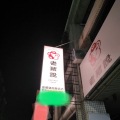|
|
原文:
Questions about pig losses to PED virus send hog futures soaring
Markets may have overreacted, Purdue ag economist says
Release Date: 2014年3月11日
Uncertainty surrounding total swine herd losses to porcine epidemic diarrhea virus (PED virus) has sent lean hog futures for spring and summer contracts to record-high levels, but it's possible the markets have overreacted, said Chris Hurt, Purdue Extension agricultural economist.
PED virus is a virus of swine that is fatal to nearly 100 percent of infected piglets that are less than two weeks old. There is no vaccination or treatment for the disease, which poses no threat to human health or food safety.
While PED virus can be devastating to individual swine herds, Hurt said it remains to be seen whether slaughter supplies will fall enough to warrant the $10 to $14 per-hundredweight surge in spring and summer futures prices over the past two weeks.
"So far this year the number of animals coming to market has been very close to the numbers indicated in the U.S. Department of Agriculture's December Hogs and Pigs report," he wrote in a weekly outlook report. "When adjusted for the number of slaughter days compared to last year, the slaughter count so far is down 0.5 percent. However, market weights have been higher by about 2.5 percent, thus causing total pork production to be up by about 2 percent."
According to Hurt, the futures market suggests that lean hog prices could average about $112 per hundredweight for the period of March through August. This compares with an average of $88 per hundredweight for the same time period last year.
If fear of low slaughter supply is the cause of the price jump, Hurt said it means traders expect hog slaughter supplies could be down by as much as 7-10 percent.
When compared with USDA's December inventory count, those numbers indicate that slaughter supplies for the second quarter of 2014 will be down only 0.5 percent. Third-quarter supplies will come primarily from winter farrowings, which is where the most uncertainty comes into play.
"Winter farrowing intentions were up 1.3 percent, but since (PED virus) kills baby pigs and is most prevalent in cold months, the number of pigs weaned per litter could be down sharply," Hurt said. "This is where no one knows for sure."
The USDA will provide an updated inventory report on March 28, which will provide information on the number of pigs that survived the winter.
If lean hog slaughter supplies end up dropping by only 3-4 percent instead of the larger losses markets might be expecting futures prices could come down.
The bigger question, Hurt said, is how PED virus will affect the financial well-being of the pork industry as a whole this year.
"The initial answer might be somewhat surprising," he said. "(PED virus) will likely increase economic returns for the U.S. industry."
Demand for pork tends to hold fairly steady, and consumers are slow to reduce their pork use even in short supply situations. According to Hurt, hog prices tend to increase by at least 2 percent for every 1 percent that the quantity drops.
"This means that total revenue in the industry will likely increase due to (PED virus) and more than offset the losses from the disease," he said.
The outcome for individual hog producers won't necessarily mirror that of the overall industry. Producers with herds severely affected by PED virus with more piglet deaths than the national average, could end up with net financial losses, Hurt said. High hog prices could offset pig losses for producers with an average number of piglet deaths.
"PED virus could actually be a financial windfall for producers who are able to avoid the disease," he said. "At the farm level, current futures markets are suggesting a live price for 2014 at a record high of $76 per hundredweight compared with $64 last year. This will provide record-high industry revenues and the highest profit per head since 2005."
機器人譯文:
關於豬損失PED病毒問題發送給生豬期貨飆升 市場可能反應過度,普渡AG經濟學家說
發布日期: 2014年3月11日
不確定性周圍總豬群的損失豬流行性腹瀉病毒 (PED病毒)已派出瘦肉豬期貨的春季和夏季的合同來記錄新高,但它是可能的市場反應過度,克里斯說拆,普渡拓 農業經濟學家。
PED病毒是豬是致命的幾乎100%被感染的仔豬是不到兩週的病毒。沒有接種疫苗或治療的疾病,對人體健康或食品安全沒有威脅。
而PED病毒可能是毀滅性的個別豬群,赫特稱,仍有待觀察屠宰用品是否會下降足以保證10美元至14美元每英擔激增春夏期貨價格在過去兩個星期。
“今年到目前為止的動物進入市場的數量已經非常接近農業部12月份美國農業部指示的數字豬和豬的報告,“他在每週展望報告中寫道。“當調整與去年同期相比的出欄天數,出欄數迄今下跌0.5%,但市場比重已經由約2.5個百分點,從而導致總的豬肉產量約2%待漲。”
據傷害,期貨市場表明,瘦肉豬價格可能到八月的月期間平均約為112美元擔。與此相比,去年同一時期的平均88美元每英擔。
如果怕低屠宰供給是跳價的原因,赫特說,這意味著交易商預計生豬屠宰供應可能高達7%-10%將下降。
當與美國農業部12月份的庫存盤點相比,這些數字表明,屠宰用品2014年第二季度將下降僅0.5%。第三季度的供應將主要來自冬季分娩窩數,這就是最大的不確定性開始發揮作用。
“冬季產仔意圖分別上漲1.3%,但由於(PED病毒)殺死豬娃,是最流行在寒冷的月份,豬每窩斷奶仔豬的數量可能會大幅下降,”赫特說。“這是一個沒有人確切地知道。”
美國農業部將提供3月28日的最新庫存報告,該報告將提供關於豬存活過冬的數量信息。
如果瘦肉型豬出欄用品到頭來只有3-4%的下降,而不是更大的損失市場可能期待期貨價格可能會降下來。
更大的問題,赫特說,是PED病毒將如何影響今年的財政福利養豬業的整體。
“最初的回答可能是有些令人吃驚,”他說。“(PED病毒)可能會增加對美國產業的經濟回報。”
對豬肉的需求趨向於保持相當穩定的,而消費者也慢,以減少他們使用的豬肉甚至供不應求的情況。據受傷,生豬價格往往由至少2%的速度增長,每1%的數量下降。
“這意味著,在行業總收入將很可能是由於(PED病毒),並足以抵消這種疾病的損失增加,”他說。
個別養豬生產者的結果不一定反映了整個行業的。生產者受到嚴重影響PED病毒與更多的仔豬死亡人數比全國平均存欄,能與淨財務損失結束了,赫特說。高生豬價格可能會抵消損失養豬生產者與仔豬死亡的平均數。
“PED病毒實際上可能是一個意外的收穫生產者誰能夠避免疾病,”他說。“在農場一級,目前的期貨市場所提出的建議實時價格於2014年以$ 76元不等擔與64美元較去年的紀錄高位,這將提供創紀錄的行業收入和人均為2005年以來最高的利潤。”
新聞來源
|
|

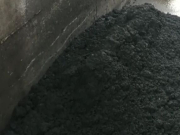

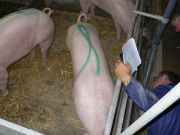
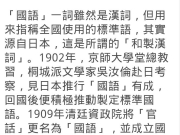
![越南非洲豬瘟疫苗蒙陰影 上百豬隻接種後死亡[轉貼]](data/attachment/block/3e/3e723490e252eebc3bc1a403febd226e.jpg)
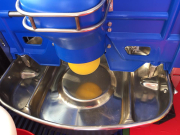
![[轉貼]從上市9頭到14頭 -- 我的養豬專業養成之路。](data/attachment/block/3c/3c17fd6b5c1b8cff34fdc7342238e082.jpg)
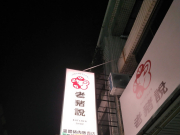
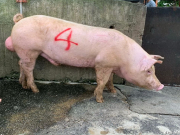
![[轉貼]這個倒霉王國,因為一隻老鼠慘遭滅國 .....](data/attachment/block/3f/3ffb7b6b8ec14613dc077bdd7603e3a5.jpg)
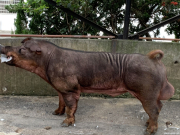



 IP卡
IP卡 狗仔卡
狗仔卡 [信息未更新]
[信息未更新] 發表於 2014-3-14 14:08:21
發表於 2014-3-14 14:08:21
 提升卡
提升卡 置頂卡
置頂卡 沉默卡
沉默卡 喧囂卡
喧囂卡 變色卡
變色卡 搶沙發
搶沙發 千斤頂
千斤頂 顯身卡
顯身卡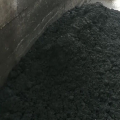

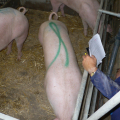
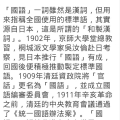
![越南非洲豬瘟疫苗蒙陰影 上百豬隻接種後死亡[轉貼]](data/attachment/block/d2/d2539d8909b33105a4f3e3b9b2e8a659.jpg)
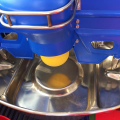
![[轉貼]從上市9頭到14頭 -- 我的養豬專業養成之路。](data/attachment/block/81/819f9b837f86a7e00498f8d95b8b9176.jpg)
